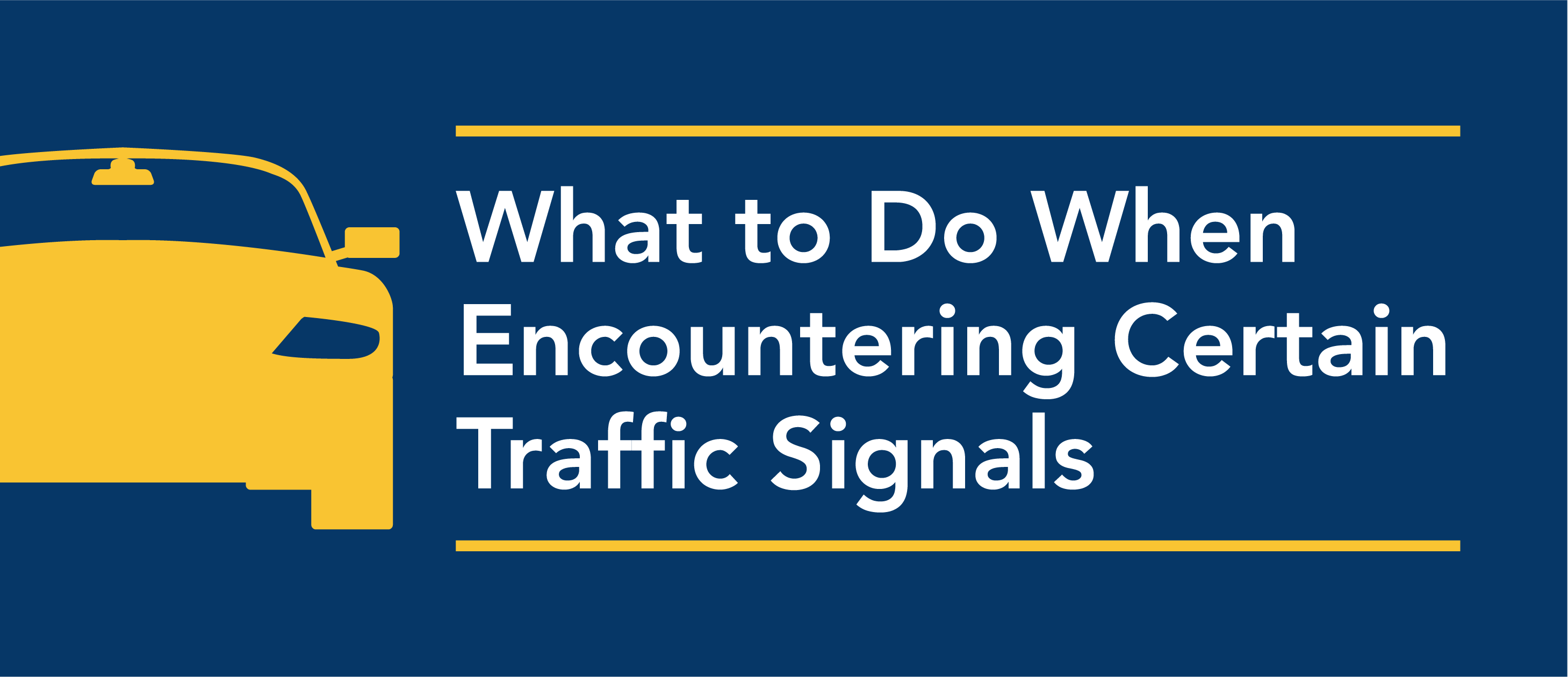
Traffic signals are used to control the flow of traffic while also promoting safe and efficient driving. Traffic control signals can be found along, beside, or above a road and are used by motor vehicles, motorcycles, bicycles and pedestrians. Traffic signals also create breaks in traffic to allow pedestrians ample time to cross the street at locations where pedestrians would otherwise experience excessive delay, difficulty crossing the street, or be at risk of being hit by a vehicle.
The History Behind Traffic Signals
The world’s first electric traffic signal was installed “on the corner of Euclid Avenue and East 105th Street in Cleveland, Ohio” in 1914. The colors, green and red are believed to have derived from early train signals from the 19th century.
What Color Are Traffic Signals?
Red, green, and yellow. These days, all traffic signals are electric automated signals. Generally most people know what to do when they encounter green, yellow or red signals. But do you know what to when you are approaching a yellow flashing signal? Or what about a red flashing arrow?
Determining What to Do At a Traffic Light
- Flashing Red Traffic Signal. Stop, yield the right-of-way to traffic within the intersection or crosswalk and proceed when safe. This sign is used at intersections when a stop sign alone is hard to see or where additional emphasis on the stop sign is needed. Flashing red traffic signals are also used at railroad crossings to warn of approaching trains.
- Flashing Yellow Traffic Signal. A flashing yellow traffic signal at an intersection means to proceed with caution.
- Traffic Signal with a Green Arrow. When the green arrow is pointed upward the driver may go straight ahead only. When the green arrow is pointed to the right the driver may turn to the right. When the green arrow is pointed to the left the driver may turn to the left. The driver does not need to stop if they are traveling in the direction of the arrow.
- Traffic Signal with a Red Arrow. A red arrow means do not make the movement shown by the arrow until a green arrow appears.
- Flashing Red Arrow Traffic Signal. A flashing red arrow should be treated as a ‘stop sign’. You may proceed once you stop and determine the intersection is clear of all pedestrians, vehicles, and other potential hazards.
Making a Right Turn on a Red Light
Always check your state laws regarding ‘right on red.’ For example, Illinois does allow for right turns on red as long as there are no posted signs prohibiting the turn. But, before you do anything you must obey the red light by coming to a complete stop in the rightmost lane with your turn signal on. Make sure to stop behind the limit line (or crosswalk or intersection if there is no line). Always yield to oncoming traffic, motorcyclists, and bikers. If there is a heavy flow of traffic, you may be better off waiting until you have a green light. As you look over your right shoulder with your signal on, get ready to turn and make sure there are no bikers approaching from behind you. As you begin the turn, hug the right curb to avoid the next lane of traffic.
Ensuring Pedestrian Safety with Traffic Signals
Traffic signals should allow enough time for pedestrians to cross the street safely and have an adequate clearance interval based upon the standardized gait speed. In areas where there is a heavy concentration of elderly individuals or children, a lower speed (about 3.0 ft/s) is used to determine pedestrian clearance time and traffic signals are adjusted accordingly. So, not only do traffic signals regulate the flow of motor vehicles, they also ensure the safety of pedestrians.
Find your state’s driver handbook online or refresh your memory about signs and signals by viewing our recent blog post, “Identifying Traffic Signals by Color.” You can also register for a Top Driver online refresher driving course to stay current with best driving practices.